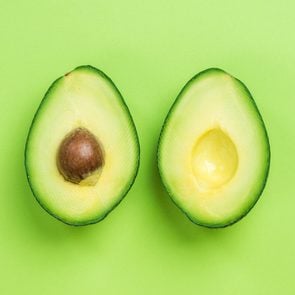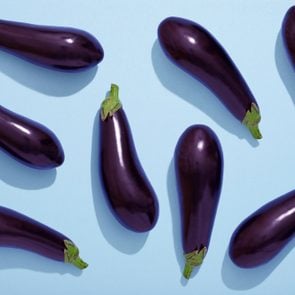Even after the weather turns cold, you can still remember the sweet taste of a ripe, ruby-red June strawberry. But here’s a surprising food fact: These delectable delights were not always the size, taste or even color they are today. And they almost didn’t exist—the fate of the modern strawberry hinged on a chance discovery by a French spy in South America in the early 1700s. Turns out, the history of the strawberry is as juicy as the fruit itself.
Thinking about strawberries and history, I can’t help but picture the strawberry-picking scene in the early 19th-century novel Emma. Jane Austen wrote the book a century after our spy’s tale, but the fruit Emma noshed on is still very different from the kind we eat today. As the two berry experts I spoke with attest, strawberries are ever-changing, and scientists are still perfecting them.
Ahead, find out the thrilling tale of the spy’s fateful voyage, the fruit’s perilous journey back and forth across the Atlantic, and the happy accident that eventually led to the sweet strawberries we know and love.
Get Reader’s Digest’s Read Up newsletter for more food history, humor, travel, tech and fun facts all week long.
A berry by any other name
Before we dive into the fascinating history, let’s get one thing straight: Despite what we commonly call it, a strawberry isn’t actually a berry, botanically speaking. In fact, its red flesh is not even a fruit!
Technically, a fruit is a plant’s ripened ovary, the female reproductive structure that protects ovules, which, when fertilized by pollen from the plant’s stamen, become seeds that can grow into new plants. That’s why a tomato is a fruit, not a vegetable. The red part of strawberries, on the other hand, develops from the receptacle (the thick part of the flower stem), not the ovary. Officially, that makes it an accessory, aggregate or false fruit.
A berry is botanically defined as a fruit that develops from a single ovary from a single flower, but that’s not the case for strawberries. And here’s the kicker: What we usually think of as “seeds,” the little yellowish things on the outside of the strawberry, are actually fertilized ovaries called achenes, which come from a single flower and each contain a seed. They are actually the true fruit!
Centuries-old strawberries

Strawberries have been around for thousands of years: Wild strawberries were first mentioned in ancient Roman texts. And in the Middle Ages, people thought that the fruits, which grow close to the ground, may be dangerous to eat if snakes or toads crawled on them. Although that’s a myth, anyone who’s ever bought strawberries knows they’re notoriously difficult to keep fresh, and this added to the difficulty of consuming them before they went bad in the centuries before refrigeration.
Not only did the fruit appear throughout history, but it also popped up across the globe. “Strawberries are native all over the world, but there are different wild forms in different regions,” says Vance M. Whitaker, a professor of horticulture who develops strawberry varieties through the Strawberry Breeding and Genetics program at the University of Florida/Institute of Food and Agricultural Sciences’ Gulf Coast Research and Education Center.
In Europe, the first cultivated strawberries were Fragaria vesca, mainly used for medicinal purposes. In North America, Fragaria virginiana grew wild across the land. Both varieties were quite small, possibly up to a half-inch long—much smaller than the monster strawberries we can get in the grocery store produce section today.
The lineage of centuries-old strawberries is difficult to interpret, though, because today’s strawberries have eight sets of chromosomes (as compared with humans’ two) and have been naturally crossed so many times that the possibilities of a single fruit’s genetic origins are nearly endless. In June 2025, Whitaker and his colleagues published a study on new ways to analyze strawberries’ genomic evolution, which could lead to new insights on the fruit’s makeup.
But the story of the modern strawberry really begins with French spy Amédée-François Frézier and his fateful journey to Chile in 313 years ago.
A secret spy mission
Frézier was a lieutenant in the French army whose varied expertise ranged from the study of fireworks to architectural stone cutting to military fortifications. The latter made him perfect for a reconnaissance mission for Louis XIV. The French king sent him to South America’s west coast, including Chile and Peru, which were controlled by the Spanish, in 1712.
Pretending to be a merchant, Frézier covertly assessed the Spanish fortifications, observed trade and exports, mapped the land, made and corrected navigational charts and evaluated the potential allegiance of the Indigenous people. He also smuggled back a type of fruit he’d never seen before: huge, white-colored strawberries.
“These strawberries were of the species Fragaria chiloensis, and the fruit were slightly larger, less tart and lighter red—or even white in color in some cases—compared to the fruit from Fragaria virginiana, which Europeans had previously collected from North America and were more familiar with,” Whitaker says.
The smuggling of strawberries
In his 1716 travel book, A Voyage to the South-Sea, and Along the Coasts of Chile and Peru, Frézier describes his encounter with this strange foreign fruit:
“They there plant whole fields with a sort of strawberry rushes, differing from ours, in that the leaves are rounder, thicker and more downy. The fruit is generally as big as a walnut, and sometimes as a hen’s egg, of a whitish red, and somewhat less delicious of taste than our wood strawberries. I have given some plants of them to Monsieur de Jussieu, for the King’s Garden, where care will be taken to bring them to bear.”
This hardier variety survived the long journey back to France and were indeed planted in Europe. But what happened next, as the story goes, was pure luck.
An accidental invention
It was a tale of two strawberries: one pale, hardy, big and bland; the other vibrant red, small, sweet and juicy. The legend goes that after Frézier smuggled the Chilean variety back to Europe, it was planted near some Fragaria virginiana already growing—and they spontaneously cross-pollinated.
“As far as we can tell, these two species hybridized by chance in a botanical garden,” Whitaker says. And voila! The perfect strawberry was born: hardy, big, red and delicious. Nature combined the best of both varieties to create the delicious descendant of all modern strawberries—a food invented by accident.
The rise of the modern strawberry

The yummy new strawberries were cultivated in Europe, where they gained popularity—hence their mention in Jane Austen’s Emma—then made their way back across the pond. “The hybrid that occurred in Europe was brought over to the U.S. and was then hybridized further with other native forms,” Whitaker says.
Distributing the strawberries for sale was difficult, though, as the fruit still went bad quickly and needed to be kept cold. As new methods for transporting seasonal produce were invented, the breeding went on. “Gardeners and breeders continued to make crosses among them and select parents and seedlings that had larger, firmer, sweeter fruit and would grow well in different parts of the country,” Whitaker says.
The strawberry of today
Modern strawberries are marvels of purposeful breeding and evolving technology, but you’ll still find the fruit growing wild across the land.
Growing in the wild
Look in your yard or a local park in summer, and you might see tiny red berries growing in the grass—they’re strawberries! “A couple of the wild strawberries that are widely spread throughout the U.S. are the Fragaria virginiana, which is one of the immediate parents of the strawberries that we grow today, and one of its ancient ancestors, Fragaria vesca,” Whitaker says. “They are easy to find today, and they have very small, soft fruit that are more round than they are oval in shape.”
Breeding the perfect berry
Who says you can’t improve on perfection? “Strawberries are still being bred today all over the world,” Whitaker says. “This is through traditional selective breeding, where we cross the best parents together and then evaluate the seedlings to choose the best from those. We then use those seedlings as parents in the next generation and continue the cycle over and over again.”
Strawberry breeders look to improve traits such as:
- Productivity or yield
- Shelf life, which is usually based on firmness
- Fruit quality, such as flavor, appearance and size
- Disease resistance, as the fruit, leaves and roots can all get different diseases
- When it’s ripe (earlier or later in the season)
- Cold-hardiness
“What’s most important in a strawberry variety will differ depending on the grower’s needs and location,” says Vern Grubinger, the vegetable and berry specialist at the University of Vermont. “For example, gardeners and pick-your-own growers typically prioritize flavor and can deal with softer berries, but wholesale growers that ship fruit must have firmness and shelf life—but they want good flavor too if possible. In cold climates, winter hardiness is essential.”
In addition, “although all growers benefit from disease resistance, commercial growers need disease resistance to grow the crop for many years on the same farm,” Grubinger says.
And as long as they keep growing it, we’ll keep eating it. There’s nothing better than taking a bite out of the perfect strawberry, picked at just the right time: ripe but not too soft, red all the way through and so juicy it runs down your chin. And it’s all thanks to the work of strawberry connoisseurs, from the French spy Frézier to modern breeders like Whitaker—with a little help from fate.
RELATED:
- Here’s Why Some Bananas Are Blue—And What You Need to Know About This Weirdly Colored Fruit
- Here’s Why Grocery Stores Spray Produce with Water (And No, It’s Not Always for Freshness)
- This Is Why Corn on the Cob Only Ever Has an Even Number of Rows
About the experts
|
Why trust us
At Reader’s Digest, we’re committed to producing high-quality content by writers with expertise and experience in their field in consultation with relevant, qualified experts. We rely on reputable primary sources, including government and professional organizations and academic institutions as well as our writers’ personal experiences where appropriate. We verify all facts and data, back them with credible sourcing and revisit them over time to ensure they remain accurate and up to date. Read more about our team, our contributors and our editorial policies.
Sources:
- Vance M. Whitaker, PhD, professor of horticulture at the University of Florida; email interview, October 2025
- Vern Grubinger, PhD, vegetable and berry specialist at the University of Vermont; email interview, October 2025
- PNAS: “Homoploid hybridization adds clarity to the origins of octoploid strawberries”
- The University of Vermont: “The History of the Strawberry”
- UF/IFAS Gulf Coast Research and Education Center: “Strawberry Facts”
- Journal of Food Composition and Analysis: “Berry size and weight as factors influencing the chemical composition of strawberry fruit”
- New York Botanical Garden: “What Is a Fruit?
- American Museum of Natural History: “Parts of a Flower”
- University of Minnesota Extension: “How Strawberry Plants Grow”
- U.S. Forest Service: “Woodland Strawberry”
- Genetics and Genomics of Rosaceae, edited by Kevin M. Folta and Susan E. Gardiner
- A Voyage to the South-Sea and Along the Coasts of Chile and Peru by Amédée-François Frézier
- The John Carter Brown Library: “Revealing the Viceroyalties: Frézier’s Voyage to the South-Sea”
- Folger Shakespeare Library: “A Glimpse into the Cultural History of Fragaria”
- UF/IFAS: “Plant Breeding: Strawberry”
The post Here’s How an 18th-Century Spy Mission Led to the Strawberries We Eat Today appeared first on Reader's Digest.
from Reader's Digest https://ift.tt/AL1q34l



Comments
Post a Comment